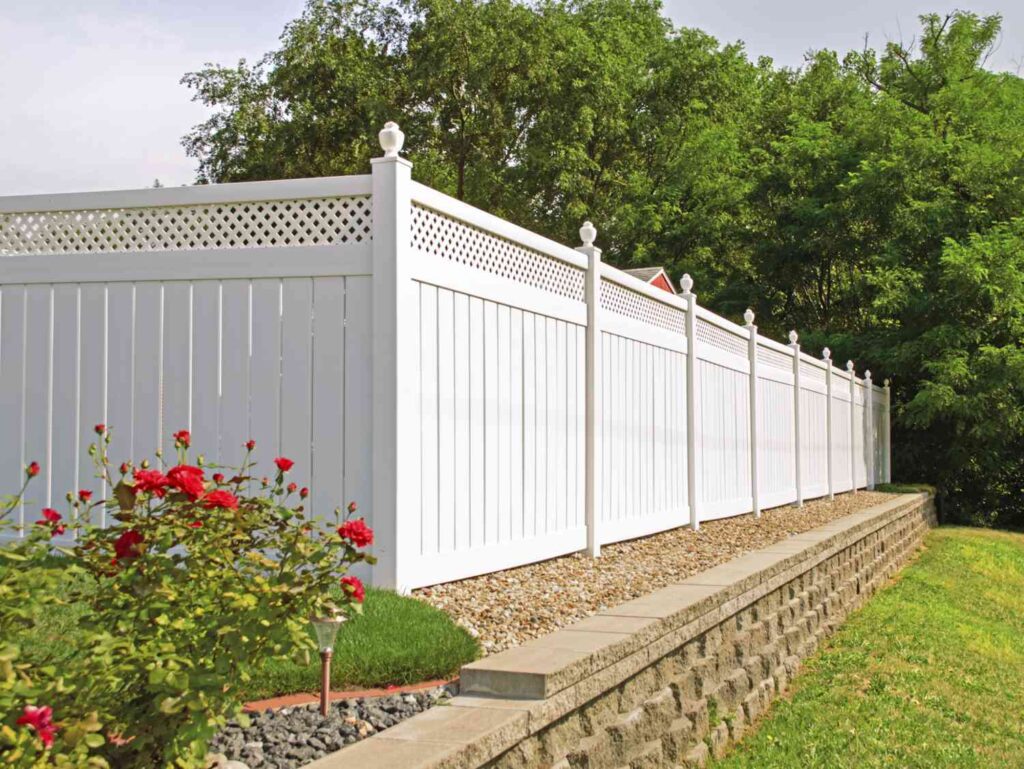1. Remove the Rough Edges
When a crack or hole appears in a vinyl fence, it often leaves rough edges and splinters. It’s essential to remove these rough edges as they can affect the final appearance of the repair. Use a utility knife to carefully trim along the inside of the hole, removing any roughness. Cutting at a bevel angle can help create a smoother transition for the filler.
2. Smooth the Damage with Sandpaper
After removing the rough edges, use 200-grit sandpaper to smooth the area. Ensure all rough spots are addressed. Then, switch to 400-grit sandpaper for a finer finish. Continue sanding until the area is smooth and ready for the next step.
3. Clean the Area Thoroughly
Cleaning the area is a critical step to ensure the adhesive bonds properly. Wipe away any debris with a rag. Then, soak the rag in isopropyl alcohol and thoroughly clean both the inside and outside of the vinyl fence around the repair site.
4. Fill the Hole with Spray Foam
Insert the spray foam nozzle into the hole and begin filling it slowly. Be careful not to overfill, as this can cause the vinyl to warp. Allow the foam to dry completely. During this time, wipe away any excess foam with the alcohol-soaked rag. If the hole is larger than eight inches, you may need to create a backing to support the foam and prevent sagging.
5. Seal the Opening with Auto Body Filler
Once the foam is dry, apply auto body filler to seal the hole. Use a knife to spread the filler evenly around the opening, covering any gaps. After the filler has dried, sand the area again with 400-grit sandpaper to smooth it out. Wipe it down with a clean rag to remove any dust.
6. Touch Up with Paint
Finish the repair by applying a fresh coat of paint that matches your fence. Ensure the paint is suitable for vinyl and can withstand various weather conditions. Regular maintenance and cleaning of your vinyl fence will help prevent future damage.

When to Contact a Professional
If you’re not comfortable with DIY repairs or if the damage is extensive, hiring a professional is a wise choice. Professionals can ensure the job is done correctly and efficiently, saving you time and effort. At Globus Gates, we provide expert fence repair services, ensuring your fence looks as good as new.
Additional Tips for Fence Maintenance
- Inspect Regularly: Regular inspections can help you spot damage early and address it before it worsens.
- Clean Frequently: Keep your fence clean by washing it regularly to prevent the buildup of dirt and grime.
- Address Small Repairs Promptly: Fixing small issues quickly can prevent larger, more expensive repairs in the future.
Conclusion
While no one anticipates damage to their fence, being prepared with the right knowledge can make repairs less daunting. Whether you choose to repair the fence yourself or hire a professional, it’s important to address issues promptly to maintain the appearance and functionality of your fence. At Globus Gates, we’re committed to providing high-quality fence repair and installation services. Contact us today to learn more about how we can help you with your vinyl fence repair needs.
